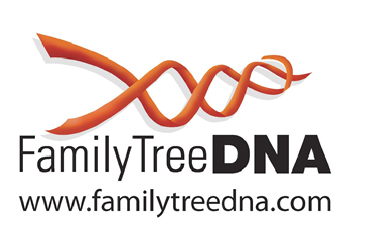Updated matching in Family Finder test announced
No, it’s not Sunday, so it may seem a bit odd for DNA to be the focus of the blog today. But there’s a change coming to Family Tree DNA‘s matching system for its Family Finder test that’s being announced so…
Call it DNA Tuesday.
Here’s the deal.
 The Family Finder test is Family Tree DNA’s autosomal DNA test — the kind of test that works across genders and helps you find cousins in recent generations.1 In the process of detecting cousins, Family Tree DNA (and every other DNA testing company) sets certain threshold limits — the minimum amount of shared DNA required for two people to show as a match.
The Family Finder test is Family Tree DNA’s autosomal DNA test — the kind of test that works across genders and helps you find cousins in recent generations.1 In the process of detecting cousins, Family Tree DNA (and every other DNA testing company) sets certain threshold limits — the minimum amount of shared DNA required for two people to show as a match.
And those limits are changing.
Here’s what Family Tree DNA has to say about it:
You asked for it – we listened!
For several years the genetic genealogy community has asked for adjustments to the matching thresholds in the Family Finder autosomal test. After months of research and testing, we will be implementing some exciting changes.
Currently, the current matching thresholds – the minimum amount of shared DNA required for two people to show as a match are:
• Minimum longest block of at least 7.69 cM for 99% of testers, 5.5 cM for the other one percent
• Minimum 20 total shared centiMorgans
Some people believed those thresholds to be too restrictive, and through the years requested changes that would loosen those restrictions.
Very soon, the following changes will be implemented to the matching program.
• No minimum shared centiMorgans, but if the cM total is less than 20, at least one segment must be 9 cM or longer.
• If the longest block of shared DNA is greater than 9 cM, the match will show regardless of total shared cM or the number of matching segments.
The entire existing database will be rerun using the new matching criteria, and all new matches will be calculated with the new thresholds.
Most people will see only minor changes in their matches, mostly in the speculative range. They may lose some matches but gain others.
So… what does this all mean? We’ll know more when we see it in action, but most of us can expect to lose a number of false positives — matches that really aren’t matches but just appear to be so because of a bunch of small chunks of DNA that don’t really show common ancestry. These have been called pile-up regions — areas of DNA where it seems like just about everybody we match has the same small chunk(s) of DNA and those chunks just pile up without meaning common descent from any identifiable people.
And some minority populations — African Americans in particular — should gain important matches that were being excluded because of the previous matching limits.
All in all, it’s a welcome development, it should produce more accurate matching, and it’s good to know the genetic genealogy companies are continuing to work to make the matching systems better.
To read more about this change in the matching system, you can read other bloggers’ posts today: Debbie Cruwys Kennett’s blog post, “New match thresholds for Family Tree DNA’s Family Finder test,”2, Roberta Estes’ post, “Family Finder Matching Thresholds Changing at Family Tree DNA,”3 or Blaine Bettinger’s post, “Family Tree DNA Updates Matching Thresholds.”4
SOURCES
- See generally Judy G. Russell, “Autosomal DNA testing,” National Genealogical Society Magazine, October-December 2011, 38-43. ↩
- Debbie Cruwys Kennett, “New match thresholds for Family Tree DNA’s Family Finder test,” Cruwys news, posted 24 May 2016 (http://cruwys.blogspot.co.uk/ : accessed 24 May 2016). ↩
- Roberta Estes, “Family Finder Matching Thresholds Changing at Family Tree DNA,” DNAeXplained (https://dna-explained.com/ : accessed 24 May 2016). ↩
- Blaine T. Bettinger, “Family Tree DNA Updates Matching Thresholds,” The Genetic Genealogist, posted 24 May 2016 (http://thegeneticgenealogist.com/ : accessed 24 May 2016). ↩



Can I assume these changes also apply to autosomal DNA transferred to FTDNA from Ancestry?
Yes. The entire database will be re-run with the new matching system.
From the Chromosome Browser I often download everything to CSV or Excel and sort and match however I want. The minimum cM is 1. In other words hasn’t there always been a way to make your own restrictions?
P.S. Sorry I will miss hearing you at the OGS conference.
Hi I would like to know that 23andme and AncestryDNA both rolled out version 3 of there ethnicity breakdown. I was wondering when was FTDNA WAS rolling out there version 3 ethnicity breakdown are have they already have?
No ethnicity updates for FTDNA recently — and that isn’t the priority there (thank heavens!! this ethnicity stuff is soooooo overhyped!). I’m sure it’ll happen eventually, but no timetable.